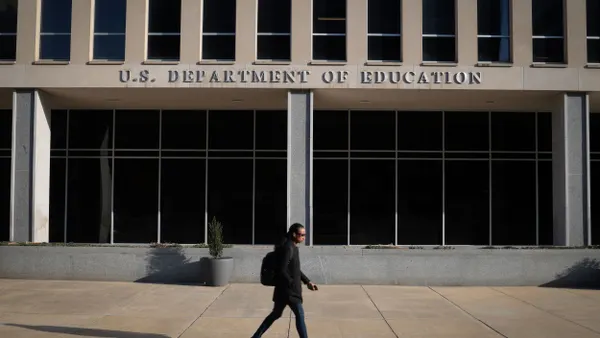Dive Brief:
- Advisory time can be an effective tool for students, giving them a chance to reflect on their progress, and feel more empowered about their academic success, James Bailey, a turnaround leader at Carpe Diem Innovative Charter Schools in San Antonio, Texas, writes for Edutopia.
- Bailey has had students spend 15 to 20 minutes a week checking their grades, finding areas where they could improve and receiving feedback from their advisors.
- The results were positive, including higher GPAs, students earning 53% more credits and a 20% increase in assessments passed at the end of the school year.
Dive Insight:
Giving students time to reflect on themselves, their progress and their interests is not necessarily considered a core part of curriculum. Educators structure time to learn, not necessarily time for students to figure out who they are and what they hope for their future — but perhaps they should.
An evaluation of the Teacher Advisement Program (TAP) at Handley High School in Alabama found that the majority of students who took part in the program did not show improvement in academics. But those who met with teachers for “mentoring, guidance lessons, graduation requirements, grade and transcript reviews,” walked away with something else — a renewed focus on their own success, noted researchers from Jacksonville State University.
“Students do not realize that while they are working on the monthly TAP activities and planning for the future, they are inadvertently increasing their motivation to achieve more academically,” researchers wrote. “When students feel supported and cared for, they tend to work harder."
Building these advisory opportunities into a crowded school day is hardly a simple task for administrators. The chance to help students feel more positive about themselves, however, may be an opportunity too positive, however, to ignore.











